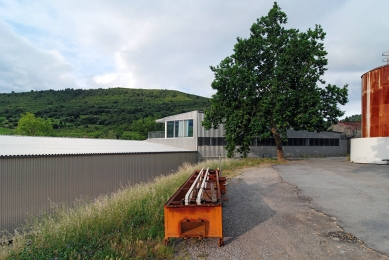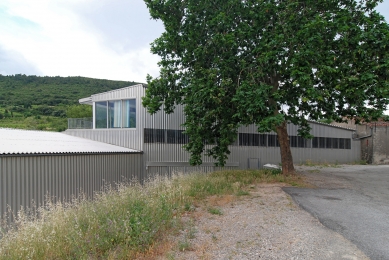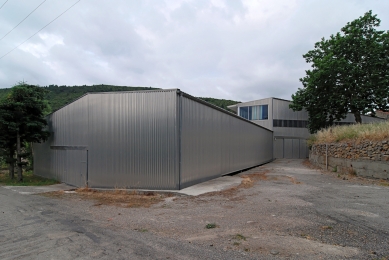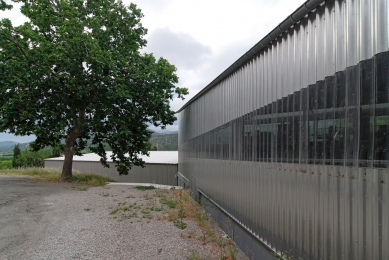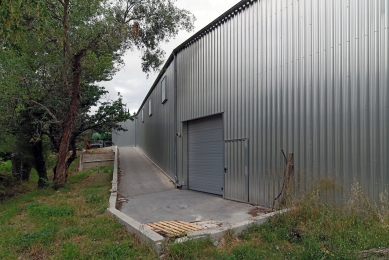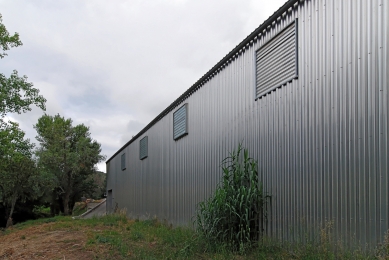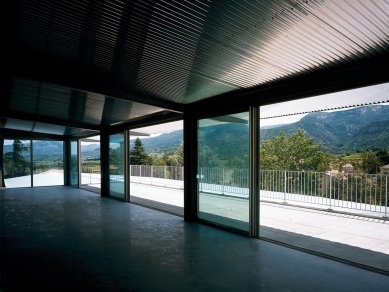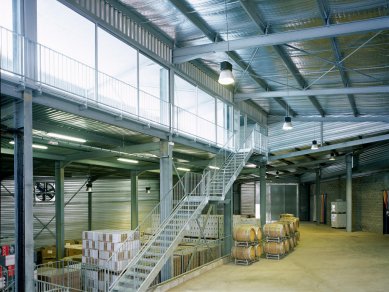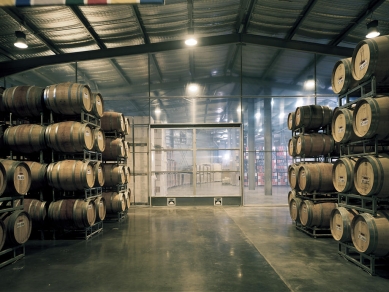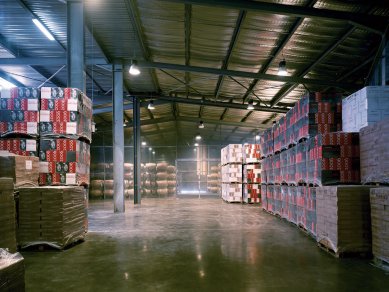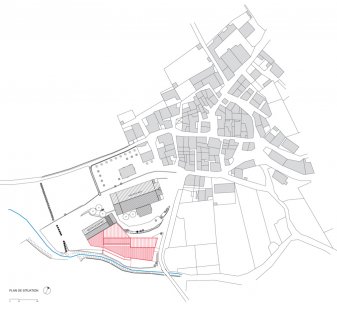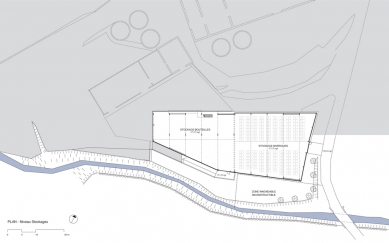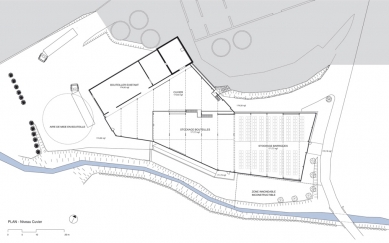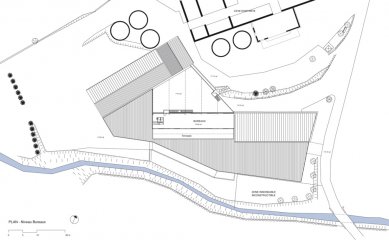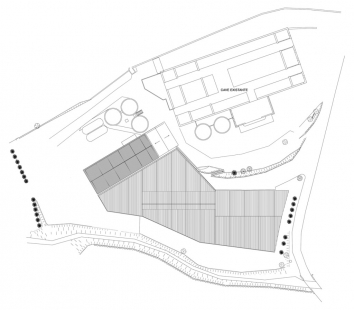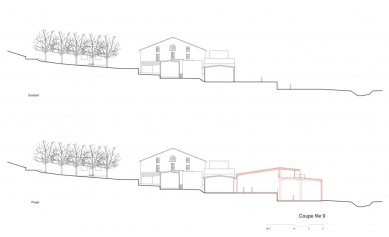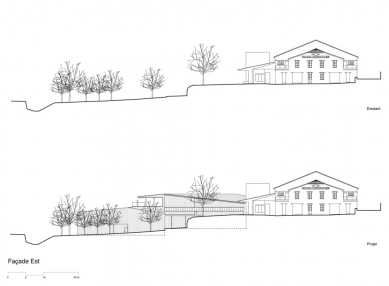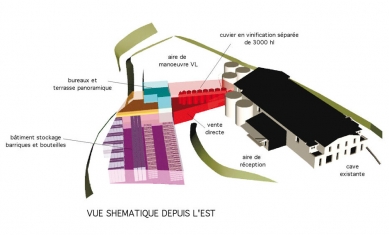
Wine cellar Embres-et-Castelmaure
Cave et chais Embres et Castelmaure

The cooperative cellar is the largest building in this small wine-producing village of 140 inhabitants, wedged into the Corbières massif. More than the mayor's office or the church, it is the village's representative "monument". The extension of the co-operative cellar provides the opportunity to requalify the relationship of the cellar to the village and the soil. In freeing up the views to the southeast it reopens the village in the direction of the vineyards. The new spaces are inscribed lower down the sloping terrain, thereby recovering the ground surface, after the manner of a protective shield over an archaelogical site. The aluminium skin overlaying the structure reflects the greater part of the sun's rays and avoids the overheating of the temperature within, thus permitting the need for cooling to be minimized.
0 comments
add comment


